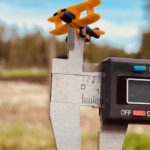A Role for Rules
By Bernie Willis
A highly experienced, respected and accomplished European aviator said to me,
“Rules are for fools, but a guide for wise men.” Contemplating his statement my mind bounced like a ball in a hand ball court. Try following these thoughts!
Now, rules are for our safety. When followed we stay within safe guidelines. But have you ever flown overweight? Was the examiner for your private check ride small enough to not exceed the gross weight of your C-150? Did you actually weigh that moose quarter squeezed behind the seat in your Super Cub last Fall. Did I drive 65 mph or less to Anchorage last week? Just heard of a driver in Switzerland who was caught driving 48 in a 27 MPH or KMH zone. He was fined 100,000.00 Euro’s based upon, not the extent of the violation, but upon a portion of his net worth. So far these are rules based upon man’s judgement. Some rules are based upon physics.
Discovering the rules of physics that allow flight was one of the Wrights biggest accomplishments. The acknowledged wing proportions and the effect upon lift didn’t prove correct for the brothers so they built their own wind tunnel and started over to determine what was needed to lift them and their machine. These rules have been updated ever since. Assumptions have been made about the forces in turbulence that may be uncomfortable for us but not destructive to our aircraft. Just yesterday a friend at breakfast asked about checking over his Cessna after hitting some jets wake turbulence. He was flying perpendicular to the jets approach to PANC and two thousand feet below when all of a sudden, he was slammed against his seat belt with his head against the cabin ceiling. The jet was touching down on runway15 at least 5 miles away. The horizontal “tornado” was still active. His question for the group was, “where do I look for hidden damage to my airframe?” There were several opinions, one related the story of an extended wing Cessna that had experienced similar conditions and landed with twisted wing tips. The fine print on the STC says something about a reduction in strength rating from Utility to Normal. FAA guidelines for long ferry flights allow for significant overweight take offs, but require restrictions about weather, routing and performance figures.
Oh those performance charts are confusing! Even the best charts don’t seem to cover all the circumstances we can find ourselves in. How do you figure take off performance with a tail wind on a down sloping runway? Or the opposite with a stiff head wind on an uphill runway? Light twin performance on one engine is rather dismal. What would you consider safe? A turbo twin comanche with a single engine rate of climb of 260 fpm and a single engine service ceiling of 19000 ft. Or a normally aspirated twin comanche has the same single engine rate of climb but only a 5800 ft. ceiling on one engine. For this illustration let’s imagine we’re in Denver roughly 5000 ft. in elevation with a temperature of 70 f and an altimeter setting of 30.00. Would you take off without turbos? Would you take the time to figure out the density altitude or just go for it. If you take the time to use them you’ll soon find performance charts are rather optimistic. Many manufacturers seem to be deliberately vague about what their aircraft can actually do. Aircraft certified under the Experimental Amateur Built category are even more susceptible to wide performance variations. The building and testing are not standardized. What do you know about the performance of the new four place Super Cub you’re considering building? Recently an experienced mechanic/pilot said to me as I was admiring his work, “Cub’s used to haul anything you could stick in them, but not this one, it huge in here.” His statement reminded me of the days flying a Dornier 28. It could haul 15, 55 gal drums. But only 5 of them could be full of fuel.
So what are we to do to remain safe? Perhaps to become an old pilot we should not be bold. But instead increase our performance understanding gradually. Always considering the various weather conditions that affect performance. Be wise and use the rules to keep from becoming fools.

